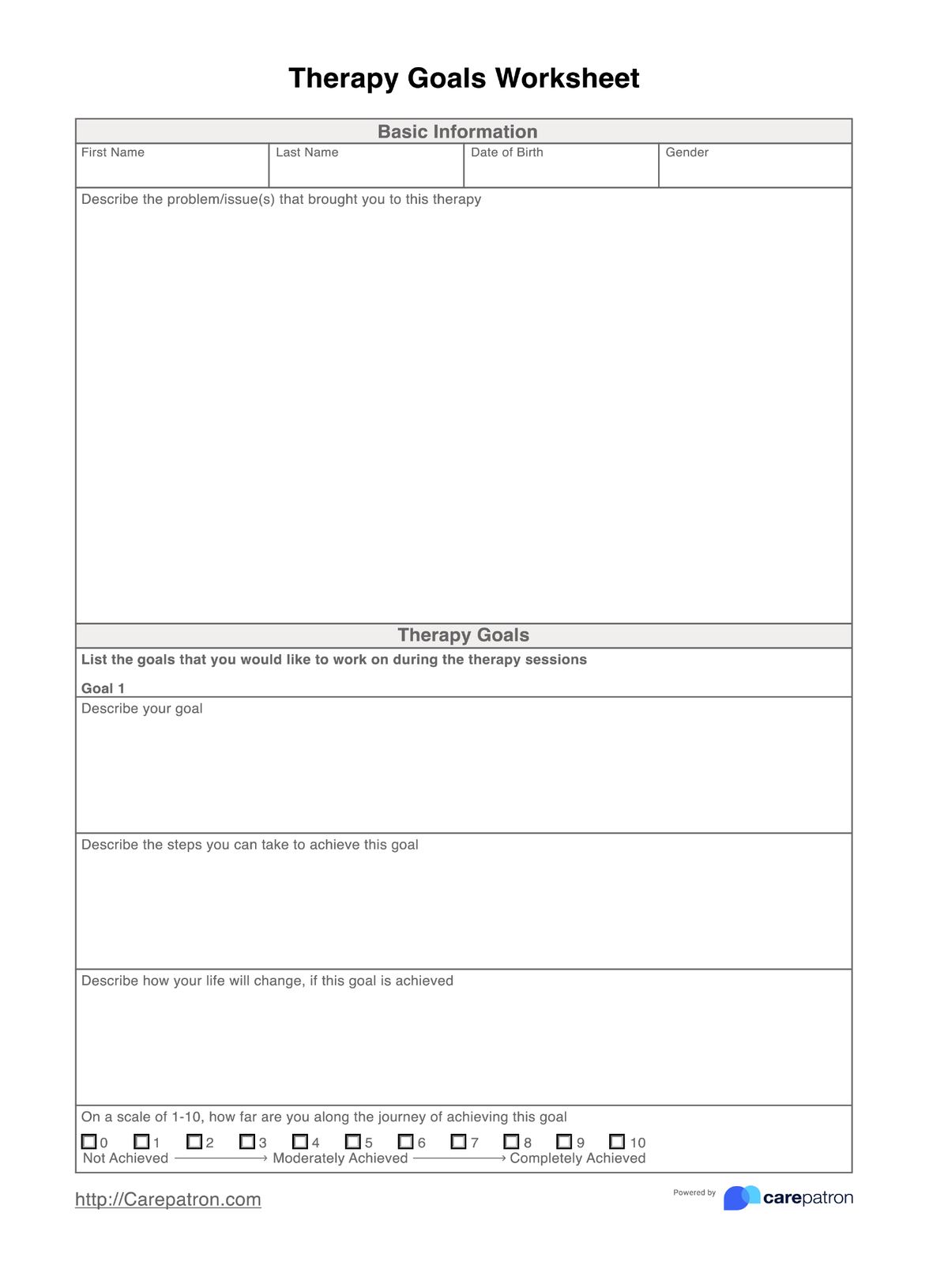The goals of therapy for patients include improving mental health, enhancing personal growth, managing symptoms, and developing coping strategies.

Therapy Goals Worksheet
Powerful therapy goals worksheet that helps your clients to achieve better therapy outcomes.
Use Template
Therapy Goals Worksheet Template
Commonly asked questions
The main goals of psychotherapy are to relieve patients from their symptoms, help them maintain or improve their daily functioning, and enhance their quality of life.
To fill a goal-setting worksheet, clearly define your current and desired states, set specific and measurable goals, outline actionable steps, and establish a timeline for achieving these goals.
EHR and practice management software
Get started for free
*No credit card required
Free
$0/usd
Unlimited clients
Telehealth
1GB of storage
Client portal text
Automated billing and online payments











